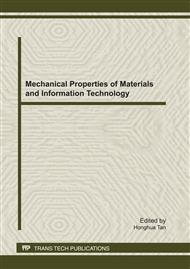p.444
p.451
p.456
p.461
p.467
p.473
p.480
p.487
p.492
Co-Treatment of Rural Kitchen Waste and Domestic Sewage to Produce Biogas Research
Abstract:
In order to deal with rural kitchen waste and domestic sewage properly, they were held in a reactor for co-treatment to produce biogas. The inflow was set as 50ml, 100ml and 150ml. The cycle was set as 3-day and 5-day. The effect of different inflow and cycle on the co-treatment was investigated during 45-day experimental period. The result showed that accumulative methane production had a positive correlation with inflow and cycle. Accumulative methane production of 150ml-inflow was better than that of 50ml-inflow. It multiplied 4.2 times during 3-day cycle and 1.2 times during 5-day cycle. Accumulative methane production of 5-day cycle was better than that of 3-day cycle at the same condition of inflow. It multiplied 4.8, 3.7 and 1.5 times, respectively. The quality of effluent was monitored as follows: CODCr > 10,000mg·L-1, TN ≈ 600mg·L-1, TP ≈ 100 mg·L-1. It could be serviced as the liquid fertilizer used in the agriculture fields. Rural kitchen waste and domestic sewage were disposed as fertilizer and used in situ.
Info:
Periodical:
Pages:
467-472
Citation:
Online since:
September 2011
Authors:
Keywords:
Price:
Сopyright:
© 2012 Trans Tech Publications Ltd. All Rights Reserved
Share:
Citation:


